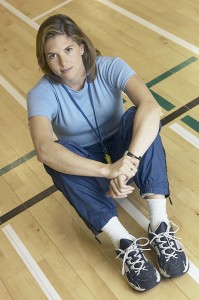One pager: Teaching trends, terms, and tensions
Assignment: Create a one pager on trends, terms, and tensions surrounding teachers today for an audience of lay people not involved with schools. (This might also be a worthwhile assignment for teacher ed candidates.)

Background: I have been working on a project with a group of non-educators. Our purpose is related to serving teachers, but the exact mission does not matter here. I find myself pausing often, realizing that these highly intelligent, well-meaning people have no exposure to life as a teacher or to the education trends and currents that slap our faces like salty, unexpected waves. My group members know only what they read or see in the media. Imagine if you were trying to help teachers but knew only what you saw on Education Nation, an occasional PBS show, or in various columns and op-eds. Naively, I offered to create a one pager, not to comprehensively explain all the terms and trends, but at least to list them and indicate where tensions exist (trying to maintain neutrality!).
So far my list includes many edtech trends, terms, and challenges along with others involving policy, pedagogy, and philosophy. The more I add, the more I realize should be there. I share my list-in-progress and hope that others might suggest things I forgot. What do you think?
Terms and trends: Emerging technologies (already hatched, actually) and uses of technology
- BYOD/T (Bring your own device/technology): Students provide the hardware; done for cost-saving, concerns re equity/inequity?
- One to one: Every student has a device (laptop/tablet)
- Mobile devices/apps vs computers/software
- eBooks: electronic textbooks, electronic books of all sorts, e-Readers (Kindle, iPad, etc)
- Social media in education: learning together using tech-enabled community spaces
- Gaming in education: simulations and intelligent games far beyond “edutainment,” many student-created
- “Responsible use” policies: school policies that expect kids to use technology well and make wise choices instead of deciding for them by blocking sites, etc.
- Digital Citizenship: a combination of skills and knowledge, including ethical use of digital media (awareness of copyright and other rights), netiquette, positive online behavior, cybersafety, anti-cyberbullying, etc.
- Digital Literacy: a combination of skills including digital citizenship AND locating/evaluating/curating sources, etc.
- “Blended learning”: learning via combination of online and face to face delivery methods or combo of tech-guided and teacher-guided learning or synchronous and asynchronous or variations on any of the above. Ask for a definition when someone uses this term

Terms, trends, tensions: Curriculum and Accountability
- Common Core (CCSS): elevated, nation-wide curriculum rigor vs lock-step test prep?
- Student test scores as measures for teacher evaluation and teacher quality vs multiple criteria vs ?
- Data-informed instruction: customizing teaching by using continuous snapshots of student understanding (by what measure?)
- Schools without Walls: school as an experience defined by learning rather than location; may include contact with the “real world,” experts, mentors, and global connections with other students
- Financial literacy initiatives/standards: helping kids understand saving, money, credit, and other financial skills (perhaps to head off another Wall Street meltdown?)
- STEM initiatives (or is this already a bandwagon gone by?): science, technology, engineering, and math seen as an interrelated set of skills and competencies
Broader issues and tensions
- Creativity/innovation vs specific, standards-based skills
- 21st century skills: According to the Partnership for 21st Century Skills, this means 3Rs plus 4Cs: critical thinking, collaboration, communication, creativity. Other definitions also exist based on what businesses predict students will need to thrive and contribute in their careers
- Education “reform” — whose definition? Ask.
- School improvement (takeovers or action measures toward underperforming schools as determined by test scores) vs “Rethinking” school (imagining entirely new ways to configure education)
- Industrial model of education vs. newer, student-centered models
After starting this list, my head is spinning, and I need legal sized paper to fit on one page. As teachers, we toss these terms in heated discussions with our non-educator friends and contacts, but how can we expect non-educators to understand ever-changing, multi-directional waves that break over schools and teachers? If we cannot even explain them all, no wonder even the brightest, most sympathetic people shake their heads. The good thing about all this? At least there is agreement among laypeople and educators that school is important. Let’s start building from there.







 Installment#2 of this Thanksgiving series shares my favorite tools to save me time digging, hunting, or forgetting things. As a teacher and a parent, I know how easy it is to lose things, especially among pyramids of paper. As a “teacher to go,” i.e. one who works from many locations, I especially value things that help me avoid shoulder injuries from hauling heavy bags. (Too bad the cloud didn’t exist when I taught itinerant gifted and changed schools at noon each day! ) Here are my favorite FREE helpers:
Installment#2 of this Thanksgiving series shares my favorite tools to save me time digging, hunting, or forgetting things. As a teacher and a parent, I know how easy it is to lose things, especially among pyramids of paper. As a “teacher to go,” i.e. one who works from many locations, I especially value things that help me avoid shoulder injuries from hauling heavy bags. (Too bad the cloud didn’t exist when I taught itinerant gifted and changed schools at noon each day! ) Here are my favorite FREE helpers:



